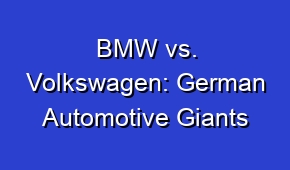Turbocharged Car Engines

Turbocharged car engines use a turbine-driven compressor to force more air into the combustion chamber, resulting in increased power and efficiency.
Turbocharged car engines have revolutionized the automotive industry with their powerful and efficient performance. These engines utilize a turbocharger to increase the amount of air and fuel mixture entering the combustion chamber, resulting in enhanced horsepower and torque. The boost provided by the turbocharger allows for quicker acceleration and improved fuel economy. Additionally, turbocharged engines benefit from forced induction, which enhances the overall engine efficiency and power output. However, it is crucial to properly maintain a turbocharged engine to prevent overheating and oil contamination. Regular oil changes and cooling system inspections are essential for ensuring the longevity and optimal performance of turbocharged car engines.
| Turbocharged Car Engines |
| 1. Turbocharged engines use exhaust gases to increase power and efficiency. |
| 2. Turbos compress air before entering the engine, allowing more fuel to be burned. |
| 3. Turbocharging can significantly enhance a car’s acceleration and top speed. |
| 4. Turbochargers are driven by exhaust gases and operate at high speeds. |
| 5. Intercoolers cool down compressed air, making it denser and increasing power output. |
- 6. Turbo lag is the delay in power delivery due to turbine spool-up time.
- 7. Boost pressure is the amount of air pressure generated by the turbocharger.
- 8. Turbocharged engines can improve fuel efficiency by downsizing.
- 9. Turbochargers can be found in both gasoline and diesel engines.
- 10. Proper maintenance is crucial for the longevity of turbocharged engines.
What is a turbocharged car engine?
A turbocharged car engine is a type of engine that uses a turbocharger to increase its power and efficiency. A turbocharger is a device that forces extra air into the engine, allowing it to burn more fuel and produce more power. This results in improved performance and acceleration.
A turbocharged engine typically consists of a turbine and a compressor, which are connected by a shaft. The exhaust gases from the engine flow through the turbine, causing it to spin. As the turbine spins, it drives the compressor, which compresses the incoming air and forces it into the engine. This compressed air allows the engine to burn more fuel, resulting in increased power output.
How does a turbocharger work in a car engine?
A turbocharger works by utilizing the energy from the engine’s exhaust gases to compress the incoming air. The exhaust gases flow through the turbine, causing it to spin. As the turbine spins, it drives the compressor, which compresses the air and forces it into the engine.
This compressed air increases the amount of oxygen available for combustion, allowing the engine to burn more fuel and produce more power. The turbocharger effectively “boosts” the engine’s performance by increasing the air intake pressure, resulting in improved acceleration and overall engine output.
What are the benefits of a turbocharged car engine?
A turbocharged car engine offers several benefits, including increased power and torque, improved fuel efficiency, and better overall performance. The additional power provided by the turbocharger allows for quicker acceleration and better towing capabilities.
Furthermore, turbocharged engines are often smaller and lighter than naturally aspirated engines, which can result in improved fuel economy. The forced induction provided by the turbocharger allows the engine to burn fuel more efficiently, reducing fuel consumption.
Additionally, turbocharged engines offer better high-altitude performance, as the turbocharger can compensate for the decreased air density at higher elevations. This can be particularly beneficial for drivers in mountainous regions.
Are there any disadvantages to turbocharged car engines?
While turbocharged car engines offer numerous benefits, there are also some potential disadvantages to consider. One common concern is turbo lag, which is the delay in power delivery when the driver presses the accelerator.
Another potential downside is increased complexity and maintenance costs. Turbochargers consist of intricate components that require regular maintenance and can be more expensive to repair or replace compared to non-turbocharged engines.
Additionally, the increased power and heat generated by turbocharged engines can put additional stress on various engine components, potentially reducing their lifespan. It’s important to ensure proper maintenance and cooling to mitigate these risks.
Can you install a turbocharger on any car engine?
In theory, it is possible to install a turbocharger on any car engine. However, the feasibility and compatibility may vary depending on several factors such as the engine’s design, strength, and supporting components.
Some engines may require modifications or reinforcements to handle the increased stress and heat generated by the turbocharger. Additionally, the engine’s fuel system, cooling system, and exhaust system may need to be upgraded or modified to accommodate the turbocharger.
It’s crucial to consult with a professional mechanic or specialist to determine if a particular engine is suitable for turbocharging and to ensure proper installation and tuning for optimal performance and reliability.
What are some common turbocharger problems in car engines?
While turbochargers are generally reliable, they can experience certain issues over time. Common problems include oil leaks, compressor or turbine housing damage, and failure of the wastegate or blow-off valve.
Oil leaks can occur due to worn or damaged seals, which may lead to decreased turbocharger performance or even engine damage if left unaddressed. Damage to the compressor or turbine housing can result from foreign object ingestion or excessive heat.
The wastegate is responsible for regulating the turbocharger’s boost pressure, and failure can lead to overboosting or underboosting. A faulty blow-off valve can cause compressor surge, which can damage the turbocharger and decrease performance. Regular maintenance and inspections can help identify and address these issues early on.
What is turbocharging vs. supercharging in car engines?
Turbocharging and supercharging are both methods of forced induction used to increase engine power. The main difference lies in how they are powered. Turbochargers are powered by the engine’s exhaust gases, while superchargers are driven directly by the engine’s crankshaft.
A turbocharger relies on the energy of the exhaust gases to spin the turbine and compress the incoming air. In contrast, a supercharger is mechanically driven by the engine, usually through a belt connected to the crankshaft. This direct drive allows superchargers to provide instant power delivery with minimal lag.
Another difference is in the efficiency and potential power gains. Turbochargers are generally more efficient, as they utilize otherwise wasted energy from the exhaust gases. Superchargers, on the other hand, tend to consume more engine power to operate but can provide more consistent power delivery throughout the RPM range.
What is the difference between a twin-turbo and a single-turbo car engine?
The main difference between a twin-turbo and a single-turbo car engine is the number of turbochargers used. A single-turbo engine has a single turbocharger, while a twin-turbo engine has two turbochargers.
A twin-turbo setup can provide several advantages, including better low-end torque, reduced turbo lag, and increased overall power output. By using two smaller turbochargers, the engine can achieve quicker spooling and improved responsiveness.
On the other hand, a single-turbo setup may be simpler and more cost-effective, but it may not deliver the same level of performance as a twin-turbo configuration. The choice between the two depends on various factors, such as the engine’s design, intended usage, and desired power characteristics.
Can a turbocharged car engine be more fuel-efficient than a non-turbocharged engine?
Yes, a turbocharged car engine can be more fuel-efficient than a non-turbocharged engine under certain conditions. By compressing the incoming air, a turbocharger allows the engine to burn more fuel more efficiently, resulting in improved fuel economy.
However, it’s important to note that a driver’s behavior and driving conditions can also significantly impact fuel efficiency. Aggressive driving, high speeds, and frequent acceleration can increase fuel consumption, regardless of whether the engine is turbocharged or not.
Additionally, the smaller size and reduced weight of many turbocharged engines can contribute to better fuel economy, as they require less energy to move the vehicle. Proper maintenance, regular servicing, and driving habits that promote fuel efficiency are essential for maximizing the potential fuel savings of a turbocharged engine.
What is turbo lag in car engines?
Turbo lag refers to the delay in power delivery when the driver presses the accelerator in a turbocharged car engine.
This delay occurs because it takes time for the turbocharger to spin up and provide the necessary boost pressure. At low RPMs, the exhaust gases may not be sufficient to spool the turbocharger quickly, resulting in a noticeable lag before the engine delivers full power.
Modern turbocharged engines often employ various technologies, such as twin-scroll turbochargers or variable geometry turbochargers, to minimize turbo lag. These advancements aim to improve low-end torque and responsiveness, reducing the perception of lag.
What is turbo boost pressure in car engines?
Turbo boost pressure refers to the amount of pressure generated by the turbocharger and supplied to the engine’s intake manifold.
When the turbocharger compresses the incoming air, it creates positive pressure, commonly known as boost pressure. This additional pressure allows the engine to burn more fuel and produce more power than it would with naturally aspirated (non-turbocharged) induction.
The turbo boost pressure is typically measured in pounds per square inch (psi) or bars. The specific boost pressure varies depending on the engine’s design, turbocharger size, and intended performance characteristics.
What is turbo flutter in car engines?
Turbo flutter, also known as compressor surge, is a phenomenon that occurs when the turbocharger’s compressor wheel stalls or experiences turbulence during throttle lift-off.
When the throttle is suddenly closed, the incoming air flow to the engine decreases rapidly. If the turbocharger continues to spin at a high speed while the air inflow decreases, the compressor wheel can experience instability and create a fluttering sound.
Turbo flutter can potentially damage the turbocharger and decrease its overall efficiency. To mitigate this issue, many modern turbocharged engines are equipped with blow-off valves that release the excess pressure and prevent compressor surge during throttle lift-off.
Can you increase the boost pressure of a turbocharged car engine?
Yes, it is possible to increase the boost pressure of a turbocharged car engine by adjusting the wastegate or installing an aftermarket boost controller.
The wastegate is a valve that regulates the amount of exhaust gas flowing to the turbine, controlling the turbocharger’s boost pressure. By adjusting the wastegate, either mechanically or electronically, it is possible to increase or decrease the boost pressure.
An aftermarket boost controller can also be installed to fine-tune the boost pressure and provide more control over the turbocharger’s performance. However, it’s important to note that increasing the boost pressure beyond the engine’s designed limits can put additional stress on various components and may require additional modifications for optimal performance and reliability.
What is the difference between a turbocharged engine and a naturally aspirated engine?
The main difference between a turbocharged engine and a naturally aspirated engine lies in how they achieve increased power. A turbocharged engine uses a turbocharger to compress the incoming air, while a naturally aspirated engine relies solely on atmospheric pressure.
A naturally aspirated engine draws in air through the intake manifold, where it mixes with fuel and undergoes combustion. The engine’s power output is limited by the amount of air that can naturally flow into the cylinders.
In contrast, a turbocharged engine utilizes a turbocharger to force more air into the engine, allowing it to burn more fuel and produce more power. The turbocharger effectively “boosts” the engine’s performance by increasing the air intake pressure.
What is the difference between a turbocharged engine and a supercharged engine?
The main difference between a turbocharged engine and a supercharged engine is how they are powered. A turbocharger is driven by the engine’s exhaust gases, while a supercharger is mechanically driven by the engine’s crankshaft.
A turbocharged engine uses the energy from the exhaust gases to spin the turbine, which in turn drives the compressor. This allows the engine to burn more fuel and produce more power.
In contrast, a supercharged engine relies on a belt connected to the engine’s crankshaft to drive the supercharger. This mechanical drive provides instant power delivery, resulting in improved throttle response and consistent power throughout the RPM range.
What is the purpose of an intercooler in a turbocharged car engine?
An intercooler is a heat exchanger that cools down the compressed air produced by the turbocharger in a turbocharged car engine.
When the air is compressed by the turbocharger, it can become heated. The intercooler acts as a radiator, dissipating the heat from the compressed air before it enters the engine’s intake manifold.
By cooling down the compressed air, the intercooler increases its density, allowing for a higher oxygen content. This denser air provides a more optimal air-fuel mixture for combustion, resulting in improved engine performance and power output.
Can a turbocharged car engine be more powerful than a naturally aspirated engine?
Yes, a turbocharged car engine can be more powerful than a naturally aspirated engine of the same size.
By compressing the air entering the engine, a turbocharger allows for a greater amount of fuel to be burned, resulting in increased power output. This forced induction effectively “boosts” the engine’s performance, allowing it to produce more power than a naturally aspirated engine.
However, it’s important to note that the specific power gains vary depending on various factors, such as the size of the turbocharger, engine design, and supporting components. Proper tuning and matching of the turbocharger to the engine are crucial for achieving optimal power and reliability.
How does a turbocharged car engine affect emissions?
A turbocharged car engine can have both positive and negative effects on emissions, depending on various factors.
On the positive side, turbocharging can improve fuel efficiency, allowing the engine to burn fuel more efficiently. This can result in reduced fuel consumption and lower carbon dioxide (CO2) emissions, contributing to environmental sustainability.
However, turbocharging can also increase nitrogen oxide (NOx) emissions, as the higher combustion temperatures associated with forced induction can lead to increased formation of NOx compounds. To mitigate this, many turbocharged engines are equipped with exhaust gas recirculation (EGR) systems and catalytic converters to help reduce NOx emissions.
Overall, the impact on emissions depends on the specific engine design, emissions control technologies, and proper maintenance to ensure optimal performance and compliance with environmental regulations.
What are some popular turbocharged car engines?
There are numerous popular turbocharged car engines available in the market. Some notable examples include the Volkswagen 2.0 TSI, Ford EcoBoost, Subaru WRX STI, BMW M TwinPower Turbo, and Audi TFSI engines.
These engines have gained popularity due to their combination of power, efficiency, and reliability. They often feature advanced technologies such as direct fuel injection, variable valve timing, and optimized turbocharger designs to maximize performance and fuel economy.
It’s important to note that the popularity and availability of specific turbocharged engines may vary depending on the region and the specific models offered by different manufacturers.





















